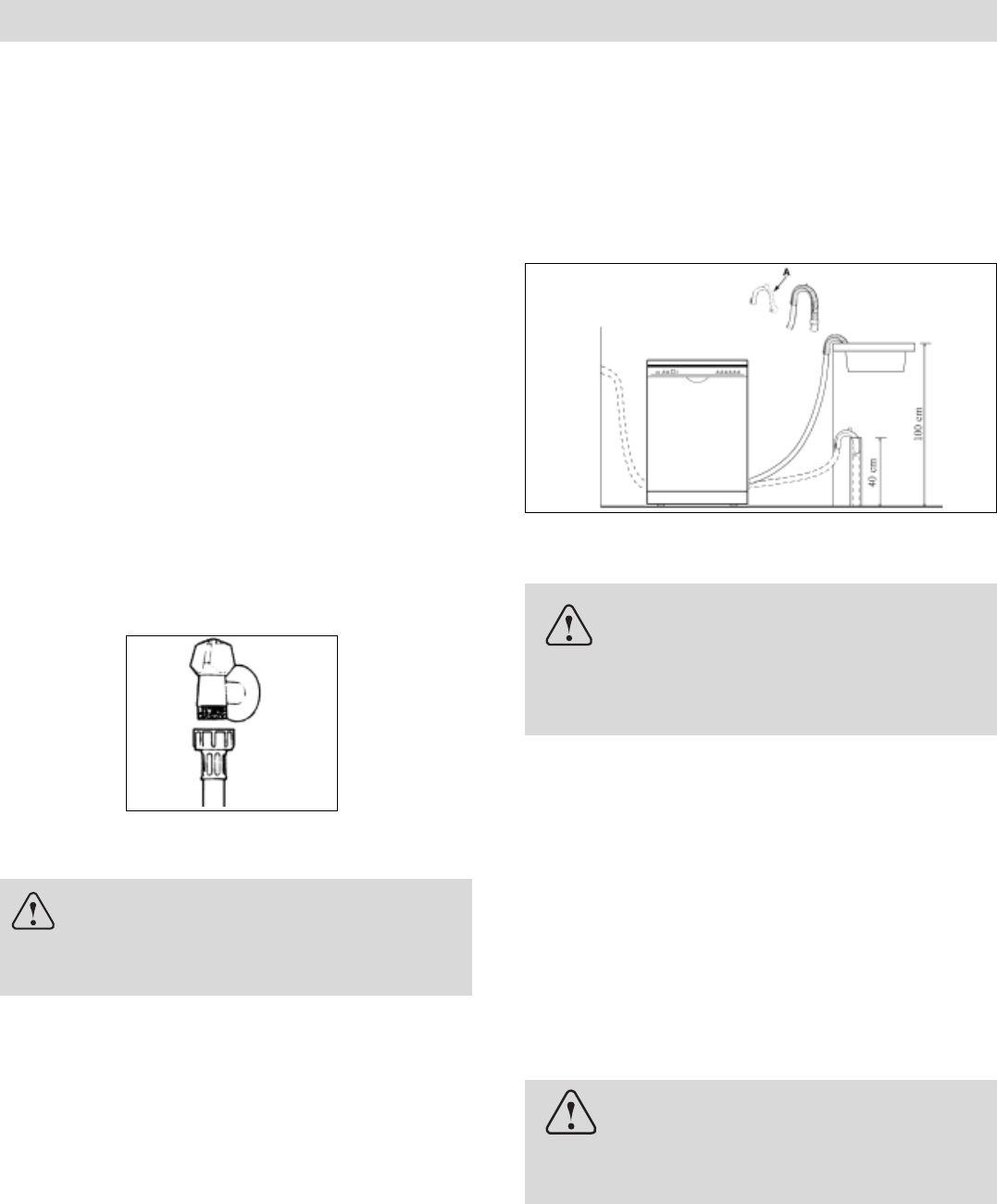
Installation
Cold water connection
Connect the water supply hose to a water outlet tap, making sure that it is
fastened tightly in place (see fig.A). Make sure the rubber washer is seated
firmly in the bottom of the connector.
If the water pipes are new or have not been used for an extended period of
time, let the water run to make sure that the water is clear and free of impurities.
If this precaution is not taken, there is a risk that the water inletcan get blocked
and damage the appliance.
Positioning the appliance
Positioning the appliance in the desired location. The back should rest against
the wall behind it, and the sides, along the adjacent cabinets or wall. The dish-
washer is equipped with water supply and drain hoses that can be positioned to
the right or the left to facilitate proper installation.
Levelling the appliance
Once the appliance is positioned, adjust the feet (screwing them in or out) to
adjust the dishwasher, making it level. In any case, the appliance should not be
inclined more than 2˚. If the appliance is level, it will help ensure proper
performance.
Warning
The appliance is to be connected to the water mains
using new hose-sets and that old hose-sets should
not be reused.
fig.A
Drain hose connection
Insert the drain hose into a drain pipe with a minimum diameter of 4cm, or let it
run into the sink, making sure to avoid bending or crimping it. If necessary, fit a
syphon trap (U-bend) with a connecting piece for the drain hose (fig.B). The
free end of the hose must be at a height between 40 and 100 cm and must not
be immersed in water.
Attention:
The connecting piece for syphon trap (U-bend)
must be solidly fastened to the wall to prevent
the drain hose from moving and allowing water
to spill outside the drain.
Electrical Connection
After making sure that the voltage and frequency values for your home corre-
spond to those on the rating plate (located on the stainless steel inner door of
the appliance) and that the electrical system is correct for the maximum voltage
on the rating plate, insert the plug into an electrical socket which is earthed
properly (the earthing of the appliance is a safety requirement mandated by
law).
If the electrical socket to which the appliance must be connected is not appro-
priate for the plug, replace the whole cable, rather than using adaptors or the
like as they could cause overheating and burns.
fig.B
Caution:
The dishwasher plug must be accessible even
when the appliance is installed as a built-in unit
so that maintenance can be done safely.
Anti-Flooding protection (for some models)
Your dishwasher has an overfill protection device which could automatically shut
off the inlet valve and starts the drain pump if the water level in the unit is detected
to be above the normal level.
If this occurs, turn off the main water supply before calling for servicing. If there is
water in the base pan because of an overfill or small leak, the water should be
removed before restarting the dishwasher.
2
EN














